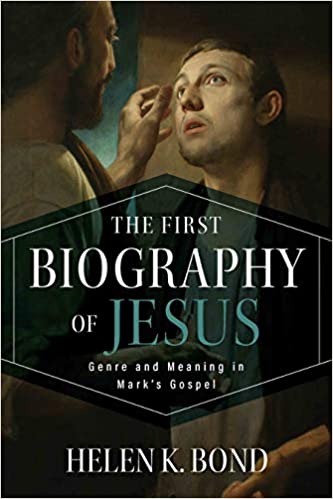BEN: Though a little tangential to our focus on Mark, one of the things I learned from reading various classics scholars who were experts in the literary and educational character of antiquity is that when the ancients read documents of their age, they normally counted on discovering both what kind of document they had just picked up and what it’s subject matter was from the first few lines of the document itself not least because it was in scriptio continua! On this showing, Mark could be seen to be a document about a special person Jesus, who was the Christ and Son of God right from the outset, in short some sort of ancient biography. But a person reading Luke’s preface, and then the story of Zechariah and Elizabeth which immediately followed would never have guessed in a million years this was a biography of Jesus! To the contrary, Luke’s work would have been seen as some sort of history account of ‘the things that have happened among us….’ In short, about events… a narrative continued in his second volume Acts. Even granting the flexibility of the bioi genre, I found Burridge’s arguments about Luke’s Gospel not very convincing, especially in light of such things as Luke’s historical synchronisms early on in the Gospel etc. I’d be very interested in your comment on this.
HELEN:
Yes, Luke . . . I think it’s fairly clear that Mark and Matthew are the best examples of biography in the NT. Although we always need to remind ourselves that biography in antiquity was as flexible as it is today, and that the early imperial age was a time of great innovation in many areas, these two works are quite easily identifiable as bioi. Matthew saw what Mark was doing and added birth/conception stories and ‘finished’ off his Markan source with the promised appearance of Jesus in Galilee. John, too, follows his Markan model closely; his high Christology starts to cause difficulties (especially in the area of imitation), but his work is still recognizably biographical. Luke, though, is more difficult. Like Matthew, he adds birth stories, drawing on the common technique of synkrisis to elevate Jesus above the Baptist; he even adds our one story of Jesus as a young man in the Temple, and again like Matthew finishes off with appearance stories. But the main problem is the existence of Acts! I’m reluctant to assign each book to a different genre – so that the gospel is a biography and Acts is a history. My colleague in Glasgow, Sean Adams, has argued that the work is a ‘collected biography’, starting with a biography of Jesus himself and then following on with biographies of his followers – specifically Peter and Paul. This has a lot going for it, though I’d also want to note that history writing itself often veered towards biography in this period (largely because of the magnetic pull of the emperor on all history writing), so I’d be equally happy in calling Luke-Acts a history with a strong tendency towards biography.
Just on the question of how these texts circulated, I found some interesting suggestions in Tore Jensen’s work on Latin Prose Prefaces that manuscripts would often circulate with some kind of a note about the work (perhaps a bit like the description of the contents and the author on modern dust jackets). Clearly in the case of Mark any such description was lost in antiquity and we know virtually nothing about the author now, but it does make a lot of sense to imagine that the first audiences of Mark’s Gospel (which, like Richard Bauckham, I assume travelled intentionally quite widely) had some idea about who had written the book, from where it originated, and that it was a life of Jesus that other Christ-following groups had found useful. I can’t believe that these texts were simply going the rounds without people asking where they’d come from – and perhaps more importantly who had written them.













